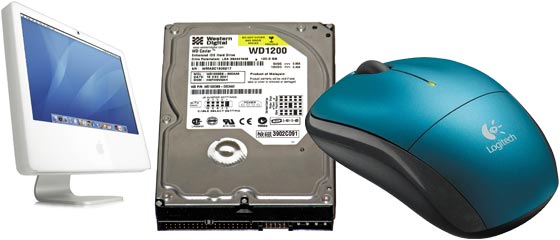 ![[Header]](../XuShared2/Line3.jpeg)

Add a Comment (Go Up to OJB's Blog Page) Forty Years of MacEntry 2312, on 2024-01-04 at 10:32:15 (Rating 1, Computers) Do you use a computer? If you do, there's a very good chance it is either a PC running Windows, or a Mac running macOS. For non-geek readers, by "running" here I am referring to the operating system the computer hardware uses. An operating system is a set of "hidden" programs which allow the "real" programs you use (like Safari or Word) to interact with the computer hardware.
The feature modern operating system use today, which is so ubiquitous that you might not even be aware of it, is the "graphical user interface". Many years ago, in the early days of computers, they were controlled by the user typing commands. For example, to see the contents of the directory (folder) "Photos" the user might type "ls Photos". Many commands got very complicated and they were hard to remember, so a "point and click" method of control was created, and that's what we use today on computers, smartphones, and many other devices.
A lot of this early work was done in the late 70s and early 80s, but the first successful commercial release of a computer using this technology was the Apple Macintosh, which was introduced 40 years ago this year, in 1984. Since then, Microsoft have adopted the same basic design in Windows, and graphical interfaces are also available for Linux, although since it is primarily a server OS it is less important there.
The first Mac was pretty primitive by modern standards. It had 128K of memory and a single 400K floppy drive. The screen was black and white with a resolution of 512 x 342. It had a 16 bit main processor running at 8 MHz with a single core, and no graphics processor.
Compare that with the Mac laptop I am writing this on today (a bit higher specced than most, but still not outrageously so) which has 16G of memory (125,000 times more), 1T of SSD storage (2.5 million times as much), a 32 bit colour screen with 3456 x 2234 resolution (1,400 times more pixels) and 64 bit processor running at 3.2 GHz with 10 cores (superficially 25 million times as much processing, power but probably a lot more) and a 16 core GPU (no comparison possible, because the first Mac had nothing).
Other features a modern Mac has which were originally lacking include a camera, microphone, networking (including wireless), and several high performance connection ports. In addition, modern operating systems allow many programs to run simultaneously, will potentially run for months or years without crashing, and support networking and the internet (it's hard to understand now, but the internet wasn't really a thing back in 1984).
You can see things have come a long way. Also, although modern Macs aren't cheap, they probably cost less when allowing for inflation than the early machines did.
Not only that, but my laptop runs all day on its battery and is light enough for me to carry everywhere. The first Mac portable was released in 1989, but it wasn't convenient to use. The first "modern" portable design was released in 1991.
Occasionally I start up one of my vintage machines to enjoy the nostalgia of going back to the "halcyon days" of early computing. It's kind of fun, but extremely frustrating too. No matter how much you find your modern computer frustrating just be happy with what you have now. Try running Photoshop on a 9 inch black and white screen, or copying data using a single floppy drive, or trying to interact with other computers and other devices without modern networking and you will see how good things are now!
I was there Gandalf, I was there 3000 (well, 40) years ago (sorry, couldn't resist a Lord of the Rings quote) when the first Mac was released (and I used the Apple II, III, and Lisa before that). Those 40 years of Mac have been a wild ride!
 Comment 1 (7544) by Dad on 2024-01-04 at 11:41:01:
Good to see you getting all nostalgic. What a long way computers have advanced in such a short time.  Comment 2 (7545) by OJB on 2024-01-04 at 15:50:06:
Yeah, being involved in the early days of home computers (Apple II), business computers (Apple III, IBM PC), useful productivity software (VisiCalc) was great fun, as was being there in the early days of the internet, including creating an early personal web site.
Back then we "programmed on the bare metal". No fancy frameworks, libraries, etc; and more importantly: no committees, programming teams, huddles, or corporate guidelines. You just created the best software possible using your own skills and intuitions.
Ah yes, the nostalgia... 
You can leave comments about this entry using this form. To add a comment: enter a name and email (both optional), type the number shown above, enter a comment, then click Add.
Note that you can leave the name blank if you want to remain anonymous.
Enter your email address to receive notifications of replies and updates to this entry.
The comment should appear immediately because the authorisation system is currently inactive.
![[Comments]](../XuShared/Comment1B.jpeg) ![[Preview]](../XuShared/Comment6B.jpeg) ![[Blog]](../XuShared/Up2B.jpeg)
|

![[Comments]](../XuShared/Comment1B.jpeg)
![[Preview]](../XuShared/Comment6B.jpeg)
![[Blog]](../XuShared/Up2B.jpeg)